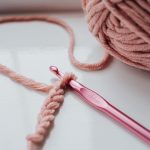Imagine the unwavering strength of Hercules applied to your favorite fabric. When you consider tensile strength, you're fundamentally looking at a material's ability to resist breaking under tension. High tensile strength is essential for ensuring that fabrics don't tear easily, especially when used in demanding applications like outdoor gear or heavy-duty upholstery. Factors like fiber type, weave patterns, and fabric construction all play significant roles in this. Curious to know how these elements interact to determine the durability of your fabrics, and ultimately, their longevity? Let's delve into this captivating interplay further.
Table of Contents
Key Takeaways
- Tensile strength measures a fabric's resistance to pulling forces, indicating its durability.
- Factors like fiber type, weave patterns, and fabric construction affect tensile strength.
- High tensile strength fabrics are crucial for outdoor gear and fashion durability.
- Fabric durability is evaluated through tensile strength and abrasion resistance.
- Proper maintenance extends the lifespan of high tensile strength outdoor gear.
Definition of Tensile Strength
Tensile strength measures how much pulling force a material can withstand before breaking. When you're evaluating fabric performance, understanding tensile strength is essential. It tells you how durable and reliable the fabric will be under stress. High tensile strength indicates that the fabric can endure substantial force without tearing, making it ideal for applications requiring durability.
For instance, consider outdoor gear like tents and backpacks. These items must resist intense strains due to environmental conditions and heavy loads. Fabrics with high tensile strength guarantee these products don't fail when you need them most.
Similarly, in the fashion industry, tensile strength plays a pivotal role in determining the longevity and quality of garments. High-performance fabrics used in sportswear and workwear need to sustain rigorous activities without compromising on comfort or durability.
You'll find that tensile strength directly influences fabric performance by providing a quantifiable measure of durability. When selecting materials, focusing on tensile strength can help you make informed decisions, ensuring that the end products meet the highest standards of quality and reliability.
Mastering this concept equips you to evaluate and choose fabrics that will withstand the demands placed upon them, ensuring superior performance and longevity.
Measuring Tensile Strength
To measure tensile strength, you'll typically use a specialized device known as a tensile testing machine. This machine stretches a fabric sample until it breaks, providing precise data on its tensile strength. You'll place the fabric between two clamps, which then pull apart at a controlled rate. As the fabric stretches, the machine records the force applied and the elongation until the fabric fails. These measurements offer valuable insights into the material's performance under stress.
Mastering the measuring techniques is essential for accurate strength comparison between different fabrics. You'll need to maintain consistent sample preparation and testing conditions. Samples should be cut to specific dimensions, and environmental factors like temperature and humidity must be controlled, as they can impact the results.
Using the data from tensile tests, you can compare the tensile strength of various fabrics. This comparison helps in selecting the right material for specific applications, ensuring both durability and performance. By understanding and employing these techniques, you'll be well-equipped to assess and optimize fabric strength, thereby enhancing material selection and product development processes.
Proper measurement is the cornerstone of reliable strength comparison and informed decision-making.
Factors Affecting Tensile Strength
When considering tensile strength, you should focus on the impact of fiber type and weave pattern.
Different fibers, whether natural or synthetic, offer varying levels of strength and durability.
Additionally, the weave pattern can greatly influence how well a fabric can withstand tension and stress.
Fiber Type Impact
The type of fiber in a fabric greatly influences its tensile strength and overall durability. When choosing fibers, think about how fiber selection impacts performance. Natural fibers like cotton or wool offer breathability but may lack the strength synthetic fibers provide. Conversely, synthetic fibers such as polyester and nylon boast incredible tensile strength and resistance to wear and tear. This makes them ideal for high-performance applications.
Fabric construction also plays a pivotal role in determining durability. Different fibers interact uniquely with various construction techniques. For example, tightly woven fabrics tend to be stronger because the fibers are more closely packed, providing less opportunity for wear. Understanding these interactions helps you make informed decisions to optimize fabric longevity and strength.
Here's a quick comparison of common fibers and their tensile strengths:
| Fiber Type | Tensile Strength (MPa) |
|---|---|
| Cotton | 287 |
| Wool | 120-170 |
| Polyester | 300-600 |
| Nylon | 700-900 |
| Silk | 500 |
Weave Pattern Effects
Weave patterns significantly impact tensile strength and fabric durability by altering the way fibers interlace. When you choose a specific weave pattern, you're not just picking a style; you're directly influencing the fabric's strength and resilience.
For instance, plain weaves, where each warp thread crosses over and under each weft thread, provide balanced tensile properties suitable for many uses. However, they may not offer the highest tensile strength.
If you're looking for maximum fabric strength, consider twill weaves. Twill patterns, characterized by their diagonal ribs, distribute stress more efficiently, enhancing the tensile properties of the fabric weave. This makes twill fabrics more robust and resistant to tearing.
Satin weaves, on the other hand, focus on smoothness and luster, often sacrificing some tensile strength for a sleek finish.
Understanding weave pattern effects is pivotal for selecting the right fabric for your needs. Each weave pattern has its unique set of advantages and trade-offs. By mastering the intricacies of fabric weaves, you can make informed decisions that balance aesthetics with durability, ensuring your fabric performs well under the intended conditions.
Definition of Fabric Durability
When you think about fabric durability, you're considering how well a material withstands wear and tear over time.
It's about the fabric's ability to maintain its integrity and functionality under continuous stress.
Understanding this helps you choose materials that last longer and perform better in demanding conditions.
Wear and Tear Resistance
In fabric durability, wear and tear resistance alludes to how well a material can withstand repeated use and friction without degrading. When you're evaluating fabric performance, wear and tear resistance becomes a critical measure. This characteristic guarantees that the fabric maintains its integrity, appearance, and functionality over time, even under constant stress.
Durability testing is your essential tool in determining how a fabric will perform in real-world conditions. Tests like the Martindale or Wyzenbeek methods simulate prolonged friction to predict a fabric's lifespan. These tests measure the number of cycles a fabric can endure before showing signs of wear, providing you with a tangible measure to assess its durability.
You'll often find that higher-quality fabrics undergo rigorous durability testing to meet industry standards. For example, upholstery fabrics in high-traffic areas must excel in these tests to secure they can handle frequent use.
Longevity Under Stress
Fabric durability under stress is all about how long a material can maintain its strength and functionality when exposed to challenging conditions. You need to understand that this involves more than just basic wear and tear; it's about how fabrics perform when subjected to continuous or extreme forces. Stress testing and longevity analysis are vital to obtaining a thorough understanding of a fabric's durability.
To master the concept of fabric durability under stress, consider these essential factors:
- Tensile Strength: This measures how much stress a fabric can withstand before breaking. Higher tensile strength often means greater durability.
- Abrasion Resistance: This evaluates how well a fabric can resist wear from rubbing and friction. Fabrics that score high in abrasion resistance typically last longer under stress.
- Environmental Resistance: This involves testing how fabrics hold up under various environmental conditions, such as UV exposure, moisture, and temperature fluctuations. High resistance here is crucial for outdoor applications.
- Flexibility and Elasticity: These properties determine how well a fabric can return to its original shape after being stretched or compressed. Fabrics with good flexibility and elasticity tend to maintain their functionality over time.
Assessing Fabric Durability
To assess fabric durability, you need to weigh factors like abrasion resistance, tear strength, and seam slippage. Each of these elements tells you how well a fabric can withstand wear and tear over time.
Abrasion resistance measures a fabric's ability to resist surface wear caused by rubbing. High abrasion resistance means your fabric will look good and last longer, even with frequent use.
Tear strength assesses how well the fabric can withstand sudden pulls or pressure. Strong tear resilience guarantees that the material won't easily rip, making it suitable for high-stress applications.
Seam slippage tests the fabric's resilience at its weakest points—where pieces are sewn together. Fabrics with low seam slippage maintain their integrity even when subjected to stress at the seams.
To maintain your fabric's durability, proper fabric care is essential. Follow the manufacturer's care instructions closely to prevent premature wear. Regularly inspect your items for signs of damage and repair any small issues promptly.
Maintenance tips such as using gentle washing cycles, avoiding harsh detergents, and storing fabrics properly can significantly prolong their lifespan. By understanding these factors and applying appropriate care, you can ensure your fabrics remain durable and functional for years.
Factors Influencing Durability
You'll notice that fabric durability depends heavily on material composition and environmental stress factors.
The type of fibers used and their blend ratios greatly affect how long a fabric lasts.
Additionally, exposure to elements like sunlight, moisture, and pollutants can accelerate wear and tear.
Material Composition Impact
The materials used in fabric production greatly affect its durability and tensile strength. Understanding the material composition influence is important for anyone looking to master fabric selection.
When you analyze tensile strength, you're basically measuring how well a material can withstand stretching or pulling before breaking. Here's how different materials impact these properties:
- Natural Fibers: Cotton, wool, and silk have unique tensile strengths. Cotton, for example, is relatively strong but can weaken when wet. Wool has excellent elasticity but mightn't resist abrasion well. Silk, while luxurious, can be delicate.
- Synthetic Fibers: Polyester and nylon generally exhibit higher tensile strength and durability compared to natural fibers. They're engineered to resist wear and tear, making them ideal for high-stress applications.
- Blended Fabrics: Combining natural and synthetic fibers can optimize both tensile strength and comfort. For instance, a cotton-polyester blend benefits from the softness of cotton and the durability of polyester.
- Weave and Knit Patterns: The way fibers are woven or knitted also plays a role. Tighter weaves generally offer greater tensile strength and durability, while looser weaves may be more prone to tearing.
Environmental Stress Factors
While understanding material composition is important, you'll also need to take into account how environmental stress factors can impact fabric durability. Environmental impact on durability can be profound, influencing how long and well a fabric performs under different conditions.
For instance, exposure to UV radiation can weaken fabric strength over time, causing it to become brittle and prone to tearing.
Climate conditions play a critical role too. High humidity levels can lead to the growth of mold and mildew, which deteriorate fibers and compromise fabric integrity. Conversely, extremely dry conditions can cause certain fabrics to become rigid and more susceptible to breakage. Temperature fluctuations are another factor; repeated cycles of heating and cooling can cause materials to expand and contract, leading to wear and tear.
Pollutants and chemicals in the environment also affect durability. For example, fabrics exposed to acid rain or industrial pollutants may degrade faster. Even everyday exposures like sweat, oils, and dirt can contribute to fabric wear over time.
Comparing Different Fabrics
Diving into fabric comparisons, you'll find that cotton, polyester, and nylon each offer unique strengths and weaknesses when it comes to tensile strength and durability. Understanding these differences requires a detailed tensile strength analysis of each fabric type, as well as an evaluation of key durability factors.
- Cotton: Natural fibers give cotton a comfortable feel, but its tensile strength is moderate. It's prone to wear and tear, especially when exposed to moisture and UV light. However, cotton's breathability is unmatched.
- Polyester: This synthetic fabric excels in tensile strength and is highly durable. It's resistant to stretching, shrinking, and wrinkles, making it a reliable choice for various applications. Yet, it doesn't offer the same comfort as natural fibers.
- Nylon: Known for extraordinary tensile strength, nylon withstands significant stress before breaking. It's durable, resilient to abrasion, and resistant to chemicals. However, it can be less breathable and retain odors.
- Blends: Combining fabrics like cotton-polyester blends can offer a balance of comfort and durability. These blends often enhance tensile strength and extend the fabric's lifespan.
Applications in Clothing
When selecting fabrics for clothing, you'll need to take into account how their tensile strength and durability will impact their performance and longevity. These attributes are essential, whether you're crafting a high-fashion piece or performance wear. High tensile strength ensures that garments can withstand the rigors of daily wear and tear, making them a staple for items like jeans or athletic gear.
Fashion trends increasingly emphasize sustainability, so choosing durable fabrics can also align with eco-conscious practices. Durable materials mean less frequent replacements, reducing waste. Fabrics like organic cotton, hemp, and recycled fibers offer both strength and a lower environmental footprint.
Textile innovation plays a significant role in modern clothing applications. Advances in fabric technology have led to the development of materials with enhanced tensile strength and durability without compromising comfort. For instance, performance wear often incorporates synthetic fibers like Kevlar or Dyneema, which offer exceptional strength while remaining lightweight.
Mastering the balance between aesthetics and functionality in fabric selection can elevate your designs to new heights. By understanding the interplay between tensile strength, durability, and sustainability, you'll be well-prepared to create clothing that not only looks good but lasts, aligning with both current fashion trends and ethical considerations.
Uses in Upholstery
Understanding tensile strength and fabric durability is equally important when selecting materials for upholstery, as these factors determine the longevity and resilience of furniture pieces. You need to choose fabrics that not only look good but also stand the test of time.
When considering upholstery, focus on both tensile strength and fabric durability to secure your furniture maintains its appearance and functionality.
For effective fabric selection and upholstery maintenance, consider these key points:
- Material Composition: Natural fibers such as cotton and linen offer breathability but might lack the durability of synthetic fibers like polyester or nylon, which are often more resistant to wear and tear.
- Thread Count: Higher thread counts generally indicate a tighter weave, enhancing both tensile strength and durability, making it a critical factor in your fabric selection.
- Abrasion Resistance: Evaluate the fabric's ability to withstand friction, especially in high-use areas. Look for materials tested for high rub counts to secure longevity.
- Maintenance Requirements: Think about how easy it's to clean and maintain the upholstery. Fabrics treated for stain resistance can simplify upholstery maintenance and prolong the life of your furniture.
Outdoor Gear Considerations
For outdoor gear, selecting fabrics with high tensile strength and durability guarantees your equipment can withstand harsh conditions. When you're scaling mountains, trekking through forests, or camping in unpredictable weather, your gear's fabric can make or break your adventure.
Brand Comparisons and Price Considerations
When comparing brands, look for those renowned for their robust fabric technology. While some brands may come with a higher price tag, investing in quality assures longevity and reliability. Here's a quick comparison to help you decide:
| Brand | Tensile Strength Rating | Price Range |
|---|---|---|
| Brand A | High | $$-$$$ |
| Brand B | Medium | $ |
| Brand C | Very High | $$$ |
Maintenance Tips and Cleaning Techniques
Proper maintenance prolongs your gear's life. Regularly clean your equipment using recommended cleaning techniques. For example, some fabrics require hand washing with mild soap, while others can handle machine washing. Always follow manufacturer guidelines to prevent damaging the fabric's integrity.
Frequently Asked Questions
How Does Washing Frequency Impact Fabric Tensile Strength?
Imagine your favorite book's pages thinning with every read. Your fabric's tensile strength follows a similar fate. Frequent washing erodes its integrity. Mindful laundering habits extend fabric longevity, preserving its resilience against laundering effects.
Can Fabric Tensile Strength Affect Its Stretchability?
You'll find that tensile strength and fabric elasticity often have a stretchability correlation. Higher tensile strength usually means less stretchability, depending on fabric composition. So, understanding these properties helps you master fabric performance and durability.
Are There Eco-Friendly Ways to Enhance Fabric Durability?
Yes, there are eco-friendly ways to enhance fabric durability. You can use innovative technologies like natural dyes and eco-friendly treatments such as enzyme washes. These methods not only strengthen fabrics but also reduce environmental impact.
How Do Fabric Blends Affect Tensile Strength and Durability?
How do fabric blends affect tensile strength and durability? You know fiber composition and weaving techniques play pivotal roles, right? Fabric construction and finishing processes further influence these properties, ensuring balanced performance and longevity in blended fabrics.
What Role Does Thread Count Play in Fabric Durability?
Thread count directly impacts fabric durability. Higher counts typically indicate tighter fabric construction, enhancing strength and longevity. However, thread quality also matters; superior threads improve overall durability by maintaining the fabric's integrity over time.
- The Use of Nonwovens in Construction and Civil Engineering - July 11, 2025
- The Use of Nonwovens in Construction and Civil Engineering - July 11, 2025
- The Use of Nonwovens in Construction and Civil Engineering - July 11, 2025







